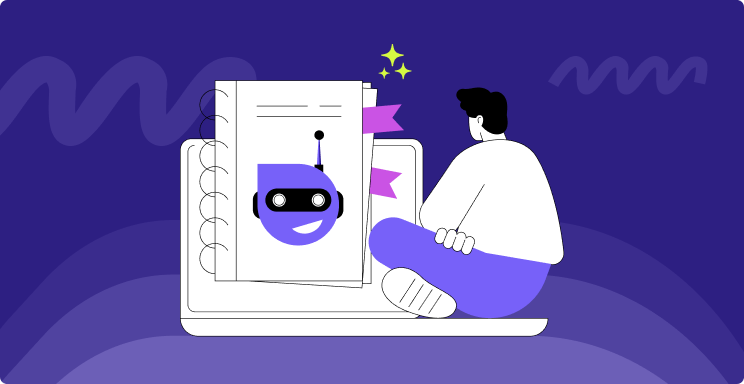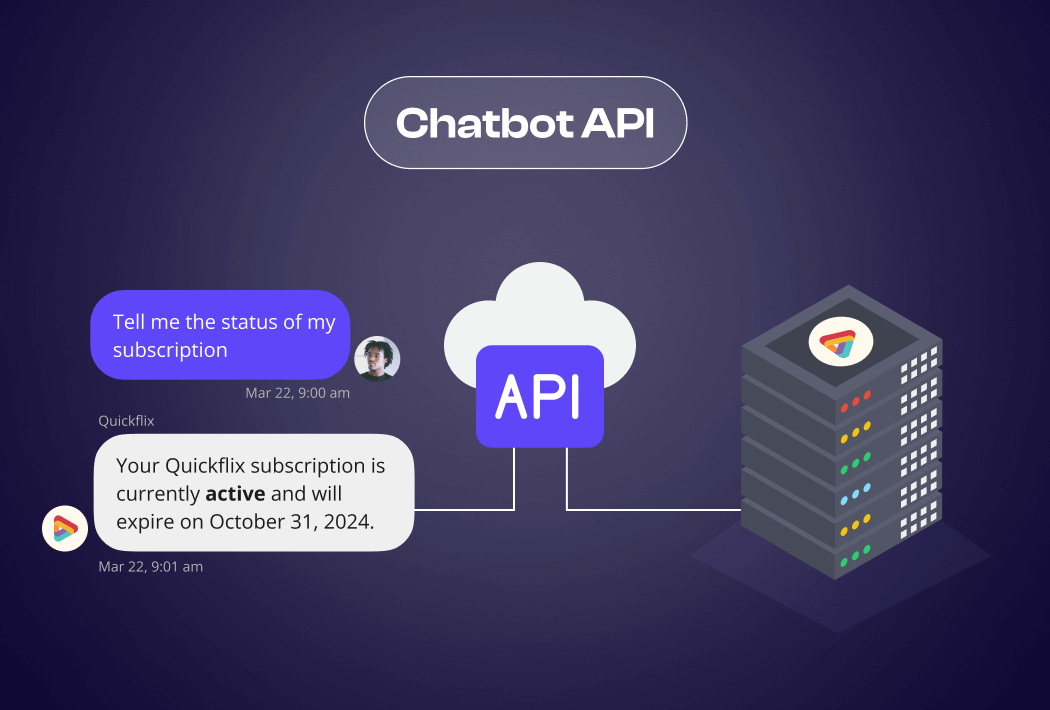If a customer asks about their subscription, the Chatbot API connects the chatbot to your payment platform and lets it access the subscription data. With this data, your chatbot can let your customer know about their subscription status.
Additionally, these APIs can function across multiple platforms. So, whenever your chatbot needs to access websites, mobile apps, or social media, a chatbot API will help connect them.
This versatility provides your chatbot with much-needed data that helps it provide more intelligent and personalized messages. Chatbot APIs help your chatbots become more efficient and, thus, improve overall customer experience.
How Does a Chatbot API Work?
Now that you understand why chatbot APIs are important, let’s talk about how it form connections between different systems and your chatbots:
User Interaction
Whenever a customer sends a message to your chatbot, it tries to understand its intent, identifying the core request from the customer.API Request
Once the intent is clear, the chatbot sends a data request through the chatbot API. The API request goes to another system and fetches the required data. Here, the API acts like a bridge and translates the chatbot’s request into a format your backend understands.Data Retrieval
Your backend system understands the request, gets the data, and sends it back through your chatbot API.API Response
The chatbot uses the data to form a human-like answer and serves it to your customer.
Your chatbot API uses this simple workflow to form the connective tissue between your backend and chatbots.
Top Chatbot APIs in the Market
Kommunicate API
The Kommunicate API is a conversational and generative-AI-enabled chatbot API designed to enhance customer experience through communication. It is integrated with multiple platforms and is ideal for teams looking to automate their customer service operations.Dialogflow API by Google Cloud
The Dialogflow API uses Google’s advanced NLP technology to provide voice and text-based interactions on various platforms. Since it is connected to Google Cloud, it is scalable and has access to advanced AI models, allowing you to build sophisticated chatbots.Microsoft Bot Framework API
Microsoft’s Bot Framework API offers omnichannel connection, including robust connections with Microsoft Teams and Slack. Powered by Azure AI, this API offers advanced NLP features, access to various foundational models (including ChatGPT), and great scalability, making it a good choice for enterprise-level customer service.Twilio Autopilot API
Twilio Autopilot lets you create chatbots across different voice and messaging channels. It also connects with Twilio’s existing communication APIs and lets you build workflows that create a better customer experience.IBM Watson Assistant API
IBM was the first company to develop conversational AI. Their Watson Assistant API comes equipped with advanced features and connectivity. This makes it suitable for enterprise-level customer service.
Businesses use chatbot APIs to elevate the customer service experience with advanced, intelligent chatbot functionalities. With the proper API, businesses can enhance customer satisfaction, streamline operations, and achieve greater efficiency in their service delivery.

